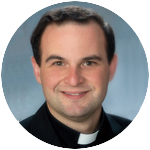
Father Eric J. Banecker
For many, the Second Vatican Council’s Constitution on the Sacred Liturgy (Sacrosanctum Concilium) represented the crescendo of the long-brewing liturgical movement, which culminated in the reform of the Latin Rite liturgy. This was lauded by many as long-overdue, and detested by many others.
Then, in the early 21st century, the drumbeat fell for the “reform of the reform,” which found its own clarion call in Pope Benedict XVI’s Summorum Pontificum, which for some “liberated” the rites in use before the Second Vatican Council while for others represented a travesty and betrayal of the Council.
With the release of two documents over the last year by Pope Francis – Traditiones Custodes and Desiderio Desideravi – we can say that the “reform of the reform of the reform” has begun.
The first document placed restrictions on the use of the liturgical rites from before Vatican II, though without abrogating their use outright. The second – perhaps in response to the howling which Traditiones caused in some circles – calls the entire church back to the principles of the liturgical movement, which were the impetus for Sacrosanctum Concilium in the first place. In it, we see that the Missal of Paul VI/John Paul II does not move the church away from her liturgical tradition, but puts a spotlight back on its inner significance.
[hotblock]
In Desiderio Desideravi, Pope Francis consciously echoes theologian Romano Guardini in calling the church to a renewed awareness, and indeed “amazement,” before the eucharistic mystery. He decries both a spiritual subjectivism (Gnosticism) which keeps us imprisoned in our own thoughts and feelings, and also a neo-Pelagianism which “cancels out the role of grace.”
The liturgical experience, says Francis, breaks us out of this individualism and “spiritual worldliness,” precisely because the liturgy is not something I create for myself. It isn’t even something “I” do at all as an individual. In absolute terms, it is God who takes the imitative – the first step – in the liturgy.
In a sentence that could have easily been written by Benedict, Francis says the liturgy “takes us by the hand, together, as an assembly, to lead us deep within the mystery that the Word and the sacramental signs reveal to us” (Desiderio Desideravi, 19).
We enter into it by the will of the Father and work of the Holy Spirit. For this reason, the liturgy can never be purely about pristine adherence to “decorative ceremonies.” Rather, the liturgy is where the church is most fully alive, most fully herself.
[tower]
This, of course, does not mean that anything goes in the liturgical celebration. Pope Francis points this out several times in the document, as in this passage: “Let us be clear here: every aspect of the celebration must be carefully tended to (space, time, gestures, words, objects, vestments, song, music…) and every rubric must be observed” (Desiderio Desideravi, 23).
Indeed, this is the great gift of the “reform of the reform” to the Church. There is very little energy in the church today behind the idea that the felt banners and clown Masses of bygone years should (or would) make a return (a few embarrassing contemporary examples notwithstanding). In this, Pope Benedict’s insight about the Extraordinary Form enriching and providing the necessary hermeneutic of continuity for the current liturgical books was prescient.
And – thanks to better liturgical formation in seminaries – it is a mission, at least, in the process of being accomplished. Pope Francis’ efforts here, it seems to me, will help to make sure that this is truly what takes place, rather than a divisive open war about the relative legitimacy of one or another ritual form (a war which was never the intent of Summorum Pontificum).
This summer, I spent a week out in the mountain West with some college students and a few priests. The students were, to all outward appearances, like any other college students, having the same struggles, the same ways of speaking, the same desire to know and be known.
But these college students understood – or were beginning to understand – that it is in the liturgy that God breaks open our hearts so that he can enter in. They had begun to understand that the desire for authentic friendship and real love is found in the Eucharist, the sacrament of Christ’s paschal mystery. In the makeshift chapel, Mass was celebrated in English, ad orientem, and according to the Mass promulgated by SS. Paul VI and John Paul II. There were Birkenstocks and chapel veils, shorts and dress shirts, communion kneeling and standing. But in it all, there was Christ the Lord, whose heart burned with great desire to celebrate the Last Supper with his Apostles.
That desire has not ebbed in the intervening years. Even now, he invites us not to endless debates about the liturgy, nor to obsession about the flawless execution of rubrics, but simply to the liturgy where the eternal wedding banquet is spread before us, where he leads us into the life of the Triune God, and where our self-imposed bars of individualism break open.
May a deeper understanding of this amazing gift impel presiders and participants to a full and vibrant liturgical experience. The renewal of the church in our time depends upon it.
***
Father Eric J. Banecker is pastor of St. Francis de Sales Parish, Philadelphia.
PREVIOUS: Embracing simplicity amid economic hardship
NEXT: Ukraine, a witness to true and lasting freedom



Share this story